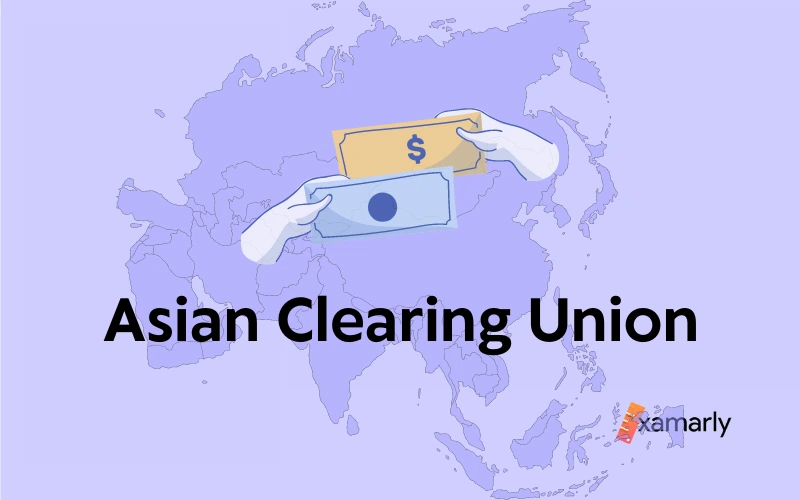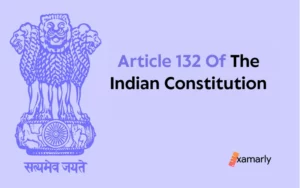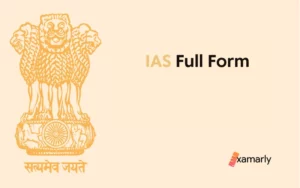The Asian Clearing Union (ACU) is a regional payment arrangement established in 1974 by the central banks of several Asian countries.
The aim of the ACU is to provide a platform for the settlement of inter-member trade transactions and payments, thereby reducing the need for individual member countries to transact with each other in foreign currencies.
Over the years, the ACU has played a significant role in promoting intra-regional trade and investment, as well as contributing to the stability of the financial system in the region. In this blog, we will explore the history, objectives, operations, and benefits of the Asian Clearing Union, and how it has impacted the financial landscape of Asia.
Read this detailed blog to gain valuable insights into the ACU and its significance in the Asia-Pacific region for your UPSC preparation.
- What is Asian Clearing Union?
- When was the Asian Clearing Union Established?
- Objectives of the Asian Clearing Union
- Members of the Asian Clearing Union
- Eligibility to Become a Member of the Asian Clearing Union
- Procedure for the Settlement of ACU Transactions
- Unit of Settlement of ACU Transactions
- Eligible Payments and Transfers Through the ACU
- Ineligible Payments and Transfers Through the ACU
- Conclusion
- FAQs on Asian Clearing Union
- What is the full form of ACU?
- Who is the Chairman of ACU?
- Who is the Secretary-General of ACU?
- What is the Asian Clearing Union (ACU)?
- Who are the members of the ACU?
- What is the purpose of the ACU?
- How does the ACU operate?
- What are the benefits of the ACU for member countries?
- How does the ACU contribute to the stability of the financial system in the region?
- Is the ACU open to new members?
What is Asian Clearing Union?
The Asian Clearing Union, also known as ACU is a regional organization that aims to promote currency trade and facilitate payments between its member states. Its headquarters are in Tehran, Iran. In addition to providing an efficient means of currency exchange, the ACU also helps coordinate national policies.
Initially, the ACU was formed as multilateral cooperation among Asian countries. By facilitating payments between members, the group helps to reduce the costs associated with clearing international transactions.
When was the Asian Clearing Union Established?
The ACU was founded on December 9th, 1974, when the countries in the region were having settlement difficulties, primarily because of resource shortages. A year later, in November 1975, the ACU started its operations.
Objectives of the Asian Clearing Union
The ACU has the following objectives:
- To offer a mechanism to settle payments for existing international transactions among participant countries on a multilateral basis.
- To encourage the use of participants’ currencies in current between their respective territories and, thus affecting economies in the use of participants’ foreign reserves and transfer costs.
- To encourage closer contact among the banking systems in the participants’ respective countries and monetary cooperation among them, hence assisting in the growth of trade and economic activities among the ESCAP region’s member nations.
- To facilitate currency SWAP arrangements among participants in order to temporarily provide them with Asian Monetary Units (AMUs).
Members of the Asian Clearing Union
The ACU has the following members:
- India: Reserve Bank of India
- Bangladesh: Bangladesh Bank
- Iran: Central bank of the Islamic Republic of Iran
- Pakistan: State Bank of Pakistan
- Maldives: Maldives Monetary Authority
- Myanmar: Central Bank of Myanmar
- Bhutan: Royal Monetary Authority of Bhutan
- Nepal: Nepal Rastra Bank
- Sri Lanka: Central Bank of Sri Lanka
Eligibility to Become a Member of the Asian Clearing Union
The following are the requirements for membership in the ACU:
- A participating member of the ACU can be any central bank or monetary authority of a regional member. Additionally, any associate member of ESCAP or monetary authority from a non-ESCAP nation may apply to join the ACU.
- It is prohibited for an ACU member state to take part in any other clearing organization or arrangement.
Procedure for the Settlement of ACU Transactions
As much as is practical, the majority of transactions should be settled immediately through the accounts held by AD Category-l banks with banks in the other participating countries subject to operational guidelines.
It indicates that payments for exports and imports should be made through the appropriate bank rather than a direct transfer. For transactions other than exports and imports, direct remittance should be used to settle the account.
Unit of Settlement of ACU Transactions
The Asian Monetary Units (AMUs) are the common unit of account for ACU and are denoted as ‘ACU Dollar,’ ‘ACU Euro,’ and ‘ACU Yen,’ each of which is the same as one US Dollar, one Euro, and one Japanese Yen.
AMUs must be used as the unit of currency for all payment instruments under ACU.
Eligible Payments and Transfers Through the ACU
The following payments are accepted for clearing by the Asian Clearing Union:
- From a resident of one member state to a resident of another member state.
- Any payment approved and allowed by the payer’s country of residence.
- For import-export transactions on delayed payment terms, any payment can be made between member states.
- Any payments made in connection with the import or export of commodities and any other payments mutually accepted by the participants.
- Payments may be made using any payment denominated in Asian Monetary Units (AMUs), such as the ACU Euro, ACU Dollar, ACU Yen, etc.
- Since July 2016, it has been possible to settle current account transactions including trade transactions in the currency of “Euro” outside of the Asian Clearing Union system.
You Might Also Like: What is ASEAN?
Ineligible Payments and Transfers Through the ACU
The ACU cannot be used to settle the following transfers and monetary transactions:
- Any transaction other than an export-import exchange among ACU members. The RBI and other participants, however, may only transact to the extent of any existing agreement between them.
- Any transfers of money among India, Nepal, and Bhutan. Unless a resident of Nepal, who is an importer resident allowed to carry out foreign exchange transactions by the Nepal Rastra Bank, buys products from a resident of India. Such transactions may be settled using methods other than ACU.
- Until further notice, all permissible current account transactions, including those involving trade with Iran, must be settled in a currency outside the ACU framework (i.e. must be settled in a currency other than the ACU).
Conclusion
The ACU was formed to promote multilateral cooperation between its member countries and their central banks and monetary authorities.
The Asian Clearing Union (ACU) is now used as a payment system in which participants settle payments for intra-regional monetary transactions on a net multilateral basis among the participating central banks.
The clearing union’s major goals are to make it easier for member countries to make payments for eligible transactions, hence strengthening trade and financial links between them.
FAQs on Asian Clearing Union
What is the full form of ACU?
The full form of ACU is Asian Clearing Union.
Who is the Chairman of ACU?
Chiranjibi Nepal is the Chairman of ACU or the Asian Clearing Union.
Who is the Secretary-General of ACU?
Lida Borhan-Azad is the Secretary-general of the Asian Clearing Union or the ACU.
What is the Asian Clearing Union (ACU)?
The Asian Clearing Union (ACU) is a multilateral payment arrangement established in 1974 by the central banks of Asian countries.
Who are the members of the ACU?
The members of the ACU include central banks of several Asian countries, including Bangladesh, Bhutan, Iran, Maldives, Myanmar, Nepal, Pakistan, and Sri Lanka.
What is the purpose of the ACU?
The purpose of the ACU is to facilitate and promote intra-regional trade and investment among its member countries.
The ACU provides a platform for the settlement of inter-member trade transactions and payments in a mutually acceptable currency, thereby reducing the need for individual member countries to transact with each other in foreign currencies.
How does the ACU operate?
The ACU operates through a clearing and settlement system, where each member country maintains a clearing account with the ACU. Trade transactions between member countries are settled through the exchange of multilateral net debit and credit positions among the member countries in a designated currency.
What are the benefits of the ACU for member countries?
The benefits of the ACU for member countries include increased efficiency in the settlement of inter-member trade transactions, reduced transaction costs, reduced dependence on foreign currencies, and improved regional economic cooperation and integration.
How does the ACU contribute to the stability of the financial system in the region?
The ACU contributes to the stability of the financial system in the region by providing a mechanism for clearing and settling inter-member trade transactions and payments in a timely and efficient manner. This reduces the risk of inter-member trade transactions and payments and helps maintain financial stability in the region.
Is the ACU open to new members?
Yes, the ACU is open to new members. Central banks of eligible Asian countries can apply to become members of the ACU by submitting a formal request to the ACU. New members are admitted based on the decision of the ACU Council of Governors, subject to certain criteria and conditions.






